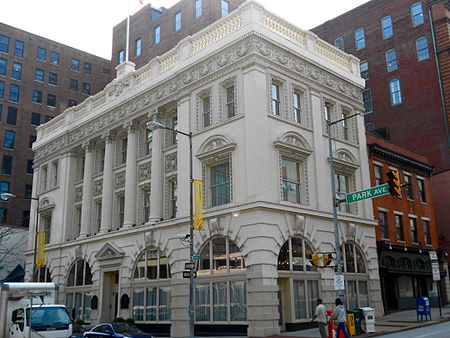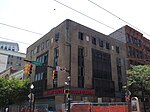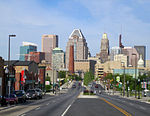Brewers Exchange
Baltimore Registered Historic Place stubsBuildings and structures in BaltimoreCommercial buildings completed in 1896Commercial buildings on the National Register of Historic Places in BaltimoreDowntown Baltimore ... and 1 more
Joseph Evans Sperry buildings

Brewers Exchange, also known as Murdock Place, is a historic office building located at Baltimore, Maryland, United States. It is a three-story Renaissance Revival style building designed by Joseph Evans Sperry (1854-1930) and built in 1896. The façade is faced with terra cotta and includes such decorative elements as two-story half-round Ionic pilasters, cartouches, pediments, window surrounds, a garland frieze, and a balustrade at the edges of a flat roof. It was used by the exchange for only a short time.Brewers Exchange was listed on the National Register of Historic Places in 1985.
Excerpt from the Wikipedia article Brewers Exchange (License: CC BY-SA 3.0, Authors, Images).Brewers Exchange
West Fayette Street, Baltimore Downtown
Geographical coordinates (GPS) Address Nearby Places Show on map
Geographical coordinates (GPS)
| Latitude | Longitude |
|---|---|
| N 39.290555555556 ° | E -76.618333333333 ° |
Address
West Fayette Street 204
21201 Baltimore, Downtown
Maryland, United States
Open on Google Maps










